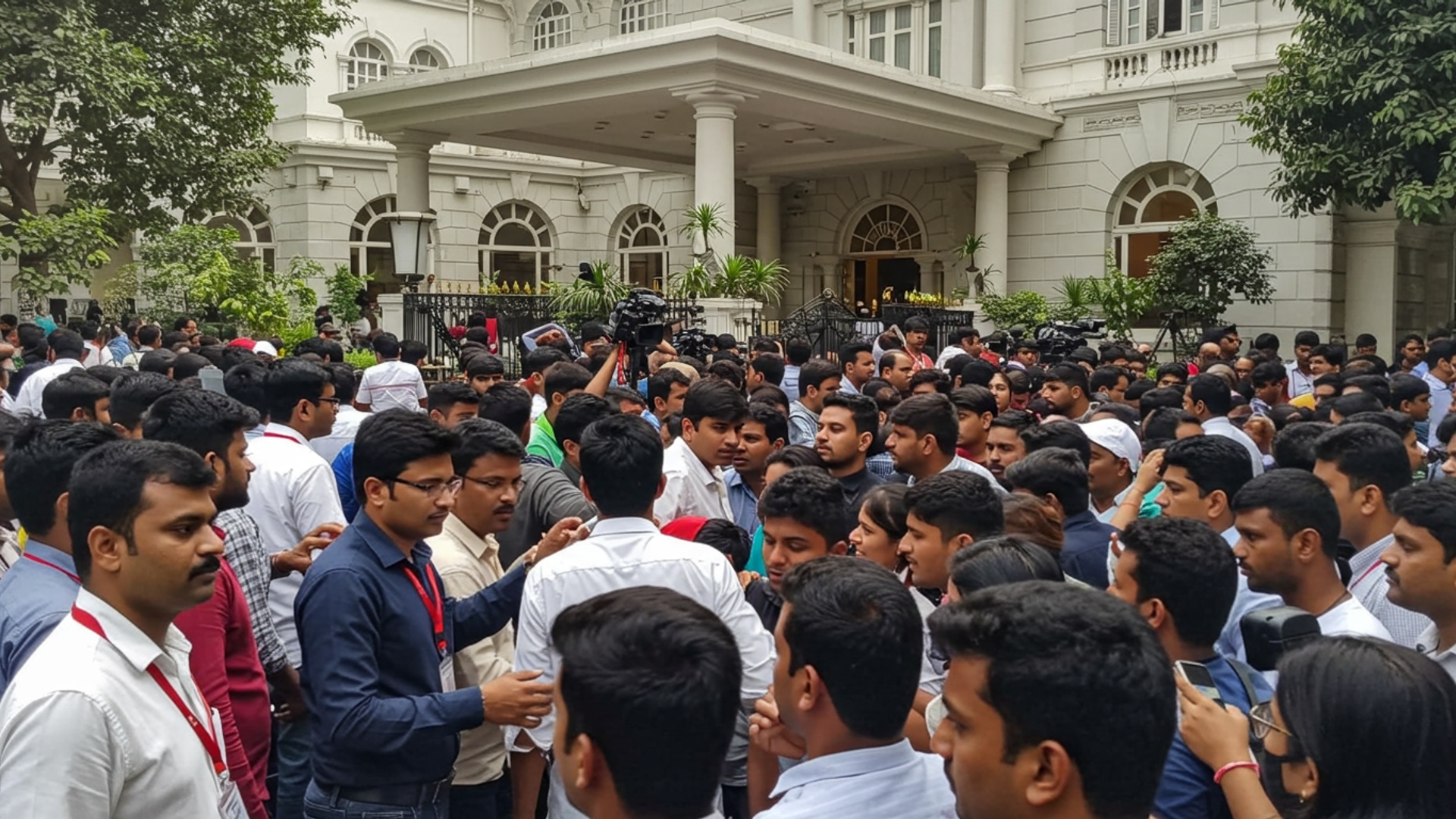Tamil Nadu’s economy just made history, reaching a huge double-digit growth rate. This strong rise in the state’s money output marks a major win, showing quick progress and smart choices. The newest numbers confirm Tamil Nadu is a top spot for business and jobs right now. This sudden climb means more work and better lives for people everywhere in the state, making this a very essential time for its economic future.
State’s Strong Economic Performance
Tamil Nadu has recently recorded a major increase in its economic activity, achieving an 11. 19% real economic growth rate in the financial year 2024-25. This marks the state’s best performance in 14 years, with the last comparable growth rate being 13. 12% in 2010-11. These revised figures, released by the Union Ministry of Statistics and Programme Implementation in August 2025, show that Tamil Nadu is the only state in India to achieve a double-digit growth rate for this period. This growth rate is significantly higher than the national average, which was 6. 5% for 2024-25. Neighboring states like Maharashtra grew at 7. 27%, Karnataka at 7. 37%. Uttar Pradesh at 8. 99% during the same year, showing Tamil Nadu’s leading position. The state’s Gross State Domestic Product (GSDP) at constant prices (using 2011-12 as the base year) rose to ₹17. 2 lakh crore in 2024-25. The previous financial year, 2023-24, also saw strong growth, with a revised estimate of 9. 26%, up from an earlier estimate of 8. 23%.
Key Areas Driving Growth
The significant economic growth in Tamil Nadu is largely due to the strong performance of its secondary and tertiary sectors.
The secondary sector, which includes manufacturing, construction. utilities (electricity, gas. water supply), played a major role. Manufacturing growth reached 14. 7% in 2024-25, a rise from 12. 6% in 2023-24. The construction sector also saw strong growth at 11. 6% in 2024-25, following a 15. 9% growth in the previous year. Overall, the secondary sector recorded growth rates of 13. 7% in 2023-24 and 13. 4% in 2024-25.
Tamil Nadu stands as a major industrial center, contributing 12. 7% of India’s manufacturing GDP in 2024-25. The state is home to around 40,000 factories, ranking first in the country for the number of operational units. Key industries include automobiles, clothing, leather and leather products, textiles, electronics, optical products. machinery. Chennai is widely known as the “Detroit of India” due to its large automotive industry, hosting major global automobile companies. The state has also become a leading player in electronics manufacturing, supported by Production Linked Incentive (PLI) schemes. The tertiary, or services, sector also showed faster growth, increasing from 7. 47% in 2023-24 to 11. 3% in 2024-25. Within this sector, real estate saw a notable rise from 7. 33% to 12. 42%. Other parts of the services sector, such as public administration, transport, hotels and restaurants, also reported double-digit growth in 2024-25. Historically, the services sector has been the largest contributor to Tamil Nadu’s economy, accounting for over 50% of the Gross State Value Added (GSVA).
Government Actions and Plans
The state government’s clear policies and investment-friendly actions have been crucial for this economic rise. The Tamil Nadu New Industrial Policy 2021, along with the Tamil Nadu Semiconductor and Advanced Electronics Policy, has helped in boosting manufacturing growth. The state has also set up special industrial parks and clusters. A major event was the Global Investors Meet 2024, which attracted investment proposals worth ₹6. 64 lakh crore. These investments are expected to create about 14. 55 lakh jobs. Foreign Direct Investment (FDI) into Tamil Nadu also increased significantly, from ₹5,909 crore in 2019-20 to ₹20,157 crore in 2023-24. Tamil Nadu is the fifth most attractive state for FDI inflows in India. In the budget for 2025-26, the industries department received a nearly 70% increase in funding, with an allocation of ₹3,915 crore, up from ₹2,295 crore in the previous budget. New initiatives include:
- A semiconductor fabless lab in Chennai, built at a cost of ₹100 crore, as part of the ₹500 crore Tamil Nadu Semiconductor Mission 2030.
- Development of semiconductor manufacturing parks in Sulur, Coimbatore. near Palladam.
- The Tamil Nadu Maritime Transport Manufacturing Policy 2025 aims to bring investments in ship and boat design and production, expected to create 30,000 jobs.
- Plans to make Hosur a new center for Global Capability Centers (GCCs) and research and development centers, building on the success in Chennai and Coimbatore. Tamil Nadu is the first state in India to offer specific subsidies for GCCs.
The state has also focused on improving the ease of doing business. For example, in June 2025, the list of ‘white category’ industries, which are non-polluting and exempt from certain environmental clearances, was expanded from 37 to 609.
Impact on People and Future Goals
The economic growth has also brought positive changes for the common people in Tamil Nadu. The Labour Force Participation Rate (LFPR) for those aged 15-59 years rose to 64. 6% in 2023-24, which is higher than the national average of 64. 3%. The poverty rate in Tamil Nadu has significantly decreased from 36. 54% in 2005-06 to just 1. 43% in 2023-24. Tamil Nadu’s per capita income in 2022-23 was ₹2. 78 lakh, which is 1. 6 times the national average. This places Tamil Nadu as the fourth-largest state in terms of per capita income. The state’s economic development is also more spread out, with many urban centers like Coimbatore, Madurai, Tirupur, Tiruchirappalli. Salem making crucial contributions, helping to reduce the gap between urban and rural areas. The state government has emphasized inclusive policies, often referred to as the ‘Dravidian model,’ which balances economic expansion with social welfare. These policies include significant allocations for welfare schemes, particularly for women. efforts to ensure equitable development. For example, the government provides 100 units of free electricity to households and ₹1,000 per month to female heads of 1. 15 crore eligible families through the Kalaignar Mahalir Urimai Thittam scheme. Looking ahead, Tamil Nadu has set an ambitious goal to become a $1 trillion economy by 2030 or 2032-33. To achieve this, the state aims to maintain an annual growth rate exceeding 12%.
Views from Officials and Experts
Chief Minister M. K. Stalin has stated that Tamil Nadu’s “Dravidian model” government stands as the only state in India to achieve double-digit economic growth. He also mentioned that when the target of a $1 trillion economy by 2030 was set, many considered it too ambitious. with the current growth, it is now “well within reach”. Economists have pointed to the strong performance of both the services and industrial sectors as key reasons for the state’s growth. The Madras School of Economics had predicted a 9. 3% growth, while the state’s own Economic Survey for 2024-25 had projected over 8% growth, both of which were surpassed by the actual figures. Dr. K. R. Shanmugam, former Director of the Madras School of Economics and an Economic Consultant to the Finance Department, believes that if the state continues its growth, supported by strong exports, it is on track to meet its trillion-dollar economy target.
Challenges and Outlook
Despite the strong economic performance, Tamil Nadu faces some challenges. The agriculture sector, while showing a modest growth of 3. 2% in 2024-25, has continued to experience negative growth for the second year. This is largely due to its high reliance on monsoon patterns and increasing effects of climate change. The state government aims to promote climate-resilient farming by introducing new seed types and encouraging less water-intensive methods. Other challenges include some existing infrastructure gaps and the need to skill workers for new and emerging industries like Artificial Intelligence and semiconductors. But, the state is making efforts to address these by improving connectivity and focusing on workforce development. Investments in electric vehicle production and green technologies are also being promoted. The state’s first Economic Survey 2024-25, prepared by the State Planning Commission, provides a detailed analysis of key sectors and trends, along with government policies and growth prospects for the coming years. It suggests measures to address short-term challenges and support continued economic growth. ![]()















